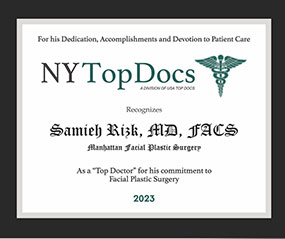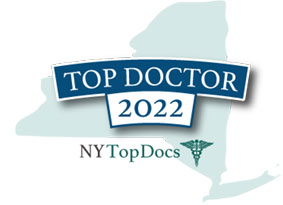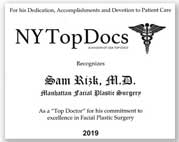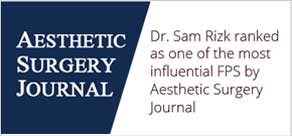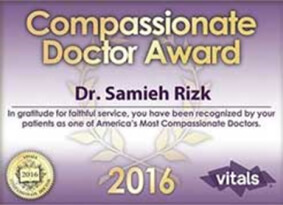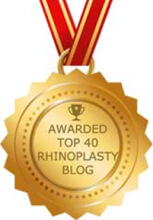What Is Droopy Nose?
A droopy nose, also known as Nasal Tip Ptosis, is characterized by a downward projection of the nasal tip, often giving the nose a longer or “hooked” appearance. This condition may occur due to aging, as decreased collagen and weakened cartilage cause the tip to sag, but it may also be congenital, trauma-induced, or a complication from previous nasal surgery.
Beyond its impact on facial balance and aesthetics, a drooping nose can lead to functional issues, such as restricted airflow and breathing difficulties. NYC facial plastic surgeon, Dr. Rizk is renowned for his expertise in executing droopy tip nose jobs, reinforcing and reshaping the nasal tip to restore proper support and achieving an improved, balanced appearance while addressing any associated functional concerns.
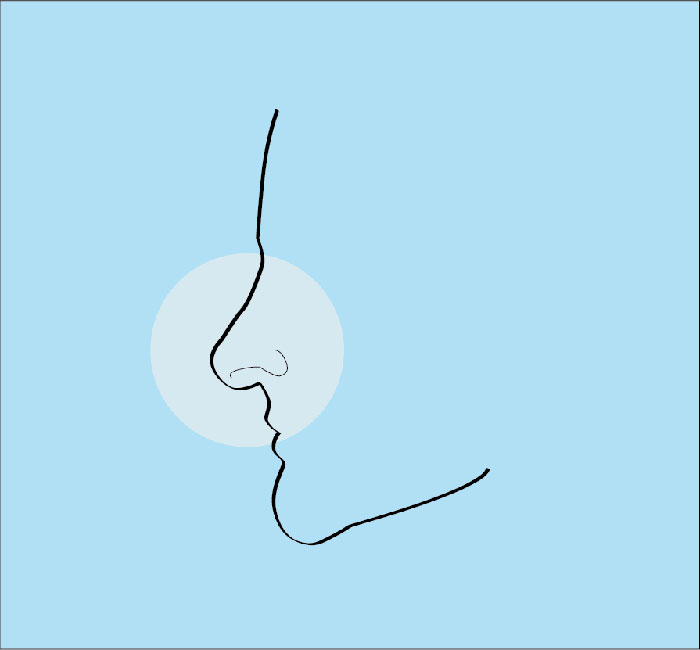
What Are The Main Symptoms of a Drooping Nose?
If you experience functional issues like breathing difficulties or aesthetic concerns from a droopy nose, seeking medical evaluation can help address these challenges and restore both nasal function and facial harmony.
Functional Symptoms
- Breathing Difficulties: A downward nasal tip can narrow the nasal passages, leading to restricted airflow.
- Snoring or Sleep Issues: Impaired airflow may contribute to snoring or obstructive sleep apnea in severe cases.
- Nasal Congestion: The altered nasal structure can disrupt airflow patterns, causing a sensation of congestion.
Aesthetic Symptoms
- Downward-Pointing Nasal Tip: The nose appears elongated or “hooked,” impacting overall facial balance.
- Aging Appearance: A drooping tip often gives the impression of aging or a tired look.
- Facial Disharmony: The drooping tip can draw attention away from other features, creating an imbalanced profile.
What Causes A Droopy Nose Tip?
Some people naturally have a drooping nose, while others may develop it over time as the skin and muscles around their nose become weakened. This can be caused by age-related changes, trauma to the bridge of the nose, or genetics. Understanding the underlying causes is crucial in determining the most effective treatment options.
Aging
As we age, the skin loses elasticity, and the cartilage weakens, causing the nasal tip to sag downward, often resulting in a droopy or “hooked” nose appearance.
Genetics
While some people may develop a droopy nose as they age due to weakened skin and muscles around their nose, others are born with droopy noses. This can be due to genetics or caused by trauma to the bridge of the nose before birth. The treatment for this type of drooping nose is often more involved, requiring a combination of rhinoplasty and skin tightening treatments in order to achieve the desired results.
Trauma
Nasal injuries can damage cartilage or supporting structures, leading to a weakened tip and causing the nose to droop, particularly if untreated.
Loss of Maxillary Support | Maxilla Osteoporosis
The loss of maxillary support may enhance or worsen a droopy nose tip. In some cases, a condition known as osteoporosis of the maxilla may be responsible for the drooping nose. Osteoporosis is a condition that causes the bones in the body to become weak and brittle, leading to a decrease in support for the nasal tip. This can cause it to droop over time, making it appear longer than normal.
Excessive Tip Cartilages | Elongated Shape of Tip Cartilages
In some cases, an elongated shape of the tip cartilages may be responsible for a drooping nose. This can be corrected with rhinoplasty, which involves making small incisions at the base of the nostrils to reposition the cartilage in order to raise and support the tip of the nose. This procedure also helps to straighten the bridge of the nose and remove any bumps or irregularities.
Loosening of Ligaments | Connective Tissue Weakened
In some cases, a drooping nose may be caused by the weakening of the ligaments and connective tissue which hold it in place. This can happen due to age-related changes? or trauma or injury to the bridge of the nose. It is important to talk to a board-certified plastic surgeon about your options for treatment if you are unhappy with the appearance of your drooping nose.
Nose Job Fail | Droopy Nose Tip After Rhinoplasty
A droopy nose tip after rhinoplasty is a common complication. Most of the time, this occurs when too much tissue has been removed and the nasal tip cartilage cannot support the weight of the overlying skin. This can lead to an unattractive drooping appearance that most people would want to correct.
Determining Treatment for a Droopy Nasal Tip
The first step to correcting a drooping nose is to determine the cause. Usually, this step involves measuring the nasal tip angle and rotation, which is determined by drawing a line from the tip-defining points to the alar crease and measuring this angle in relation to the vertical facial plane.
When evaluating your nose, Dr. Rizk will ask you to smile to evaluate some of the muscles, like the depressor septi muscle because it acts to pull the nasal tip down and this event usually happens with smiling. You will also be asked if you have difficulty breathing to determine if a functional issue is involved in addition to a cosmetic deformity.
Surgical Methods For Restoring a Droopy Nose in NYC
A droopy nose tip can be corrected with rhinoplasty. This procedure involves making small incisions at the base of the nostrils to reposition the cartilage in order to raise and support the tip of the nose. The procedure also helps to straighten the bridge of the nose and remove any bumps or irregularities.
Rhinoplasty for a Droopy Nose with NYC Expert, Dr. Rizk
Nasal tip surgery, or a nasal tip nose job, involves reshaping and supporting the nasal tip, ensuring both aesthetic refinement and functional improvement. Dr. Sam Rizk utilizes cutting-edge methods, including 3D high-definition imaging for precise planning and visualization of results. The procedure often incorporates cartilage grafting to strengthen the nasal framework and tip repositioning to elevate and refine the nose’s appearance.
In addition to rhinoplasty, skin tightening treatments around the nose can help improve the appearance of a drooping nose. These treatments involve using lasers or radiofrequency devices to stimulate collagen production in order to firm up the skin around the nose.
Dr. Rizk employs meticulous suture techniques to stabilize and sculpt the nasal tip, ensuring long-term durability and symmetry with the patient’s facial features. The surgery is performed under general anesthesia, typically lasting 1-2 hours depending on complexity.
Cartilage Grafts for Droopy Nose
Dr. Rizk strongly believes that tip support using strong cartilage either from the septum, if available, or banked rib cartilage, and shaping these supportive grafts to customize them to the nose, is one of the most important things to lift a droopy tip and also define the tip. He has a customized approach to noses and does not believe in one technique or one size fits all. His custom grafts beautifully integrate into the nose to support and define them. He pioneered the use of powered instruments to sculpt graft edges into smooth contours that integrate well (instead of sharp edges by cutting cartilage with a surgical blade).
Recovery From Nasal Tip Surgery
Recovery time is generally quick due to Dr. Rizk’s innovative approaches, with most patients resuming normal activities within 1-2 weeks. Swelling and minor bruising diminish significantly within a few weeks, revealing a balanced, natural-looking outcome.
Schedule a consultation with Dr.Rizk in New York City today!
Discover Dr. Rizk’s NYC Droopy Nose Corrections:
Discover how Dr. Rizk has helped New York City patients correct the appearance of their droopy nose.
*Results may vary.
See More ResultsMeet Dr. Rizk, NYC’s Top Choice For Rhinoplasty
Dr. Sam Rizk, a double board-certified top-rated facial plastic surgeon in New York City, is a renowned expert in rhinoplasty with decades of experience. Recognized for his groundbreaking techniques, Dr. Rizk has been featured in prestigious publications such as The New York Times and Allure magazine. He also discusses the functional and cosmetic implications of Nasal Tip Ptosis in his recent teaching at the Brazilian Society of Plastic Surgeons where he lectured on “rhinoplasty in the 21st century future direction and advances“. His commitment to excellence ensures personalized, natural-looking results that enhance each patient’s unique features while meeting their individual goals. Schedule an appointment with his Manhattan office team today.
Book a Consultation With Dr. Rizk
Ready to transform your look? Click here to book a consultation with Dr. Rizk today and take the first step toward achieving your dream results.
Related Conditions
A drooping nose, characterized by a downward-facing nasal tip, can result from aging, structural issues, or previous trauma. Exploring related conditions helps provide a clearer understanding of treatment options.
Deviated Septum
Structural issues in the nasal septum can contribute to or exacerbate a drooping nasal tip, often impacting both appearance and breathing.
Uneven Nostrils
Uneven nostrils are a condition where people are afflicted by one nostril bigger than the other one. This could affect your self-confidence and functionality of your nose.
Bulbous Tip
A bulbous nasal tip is characterized by a wide, rounded appearance, often due to thick skin or excessive, poorly defined cartilage. This condition affects nasal aesthetics and is commonly treated with tip refinement rhinoplasty.
Read Our Blog For More Tips
59th Baker Gordon Symposium: Dr. Rizk Performs Live Deep Plane Facelift
Plastic Surgery Myths: Does Skin Age Faster After a Facelift?
Frequently Asked Questions
Does age matter when correcting a drooping nose?
While age can influence recovery and skin elasticity, Dr. Rizk tailors rhinoplasty to fit individual needs, ensuring natural-looking results for patients of various ages.
Can everyone have rhinoplasty for a drooping nose?
Most healthy individuals are eligible, but Dr. Rizk carefully evaluates your anatomy, goals, and overall health to determine the best approach for optimal outcomes.
How long does rhinoplasty for a drooping nose take?
The procedure typically lasts 1.5 to 3 hours, depending on the complexity and specific corrections needed.
Awards & Certifications
References
1An algorithm for treatment of the drooping nose. Ali Sajjadian, Bahman Guyuron. Available: https://pubmed.ncbi.nlm.nih.gov/19608069/.
2Nasal changes in different age groups. Dipti Shastri, Pradeep Tandon, and Ankita Singh. Available: https://www.ncbi.nlm.nih.gov/pmc/articles/PMC8820299/.

By Dr. Sam S. Rizk, M.D., FACS.
Dr. Rizk is a double-board-certified facial plastic surgeon who specializes in rhinoplasty surgery and is a recognized expert on the latest advances in facial plastic surgery techniques. He performs a range of facial plastic surgeries at his New York practice.


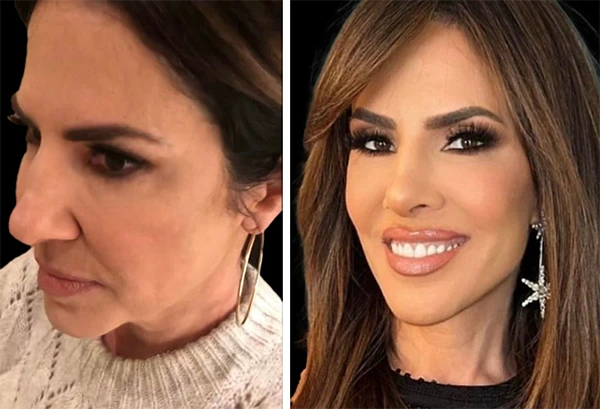
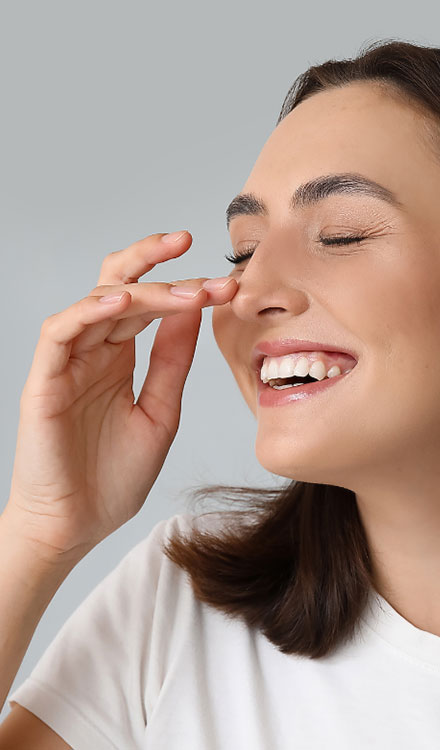
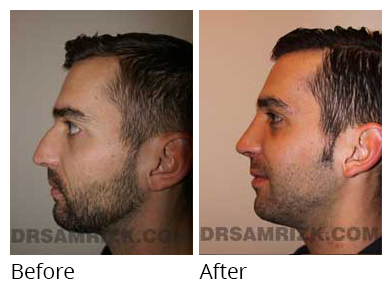
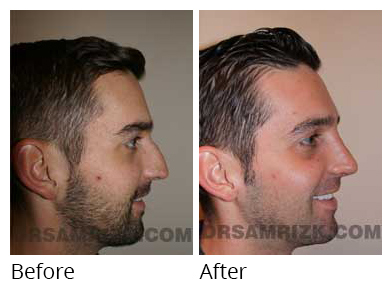
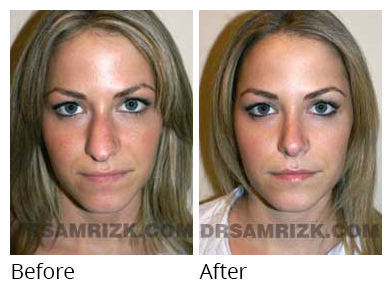
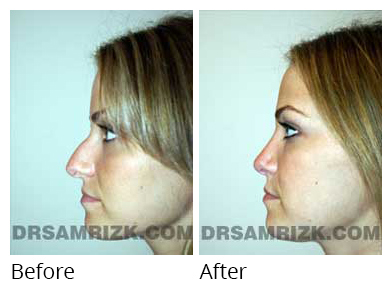
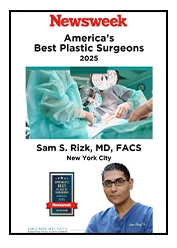
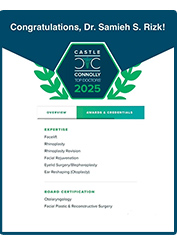
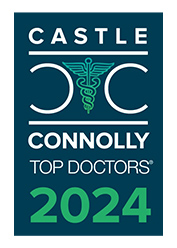


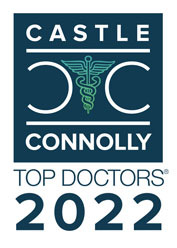


2.jpg)
